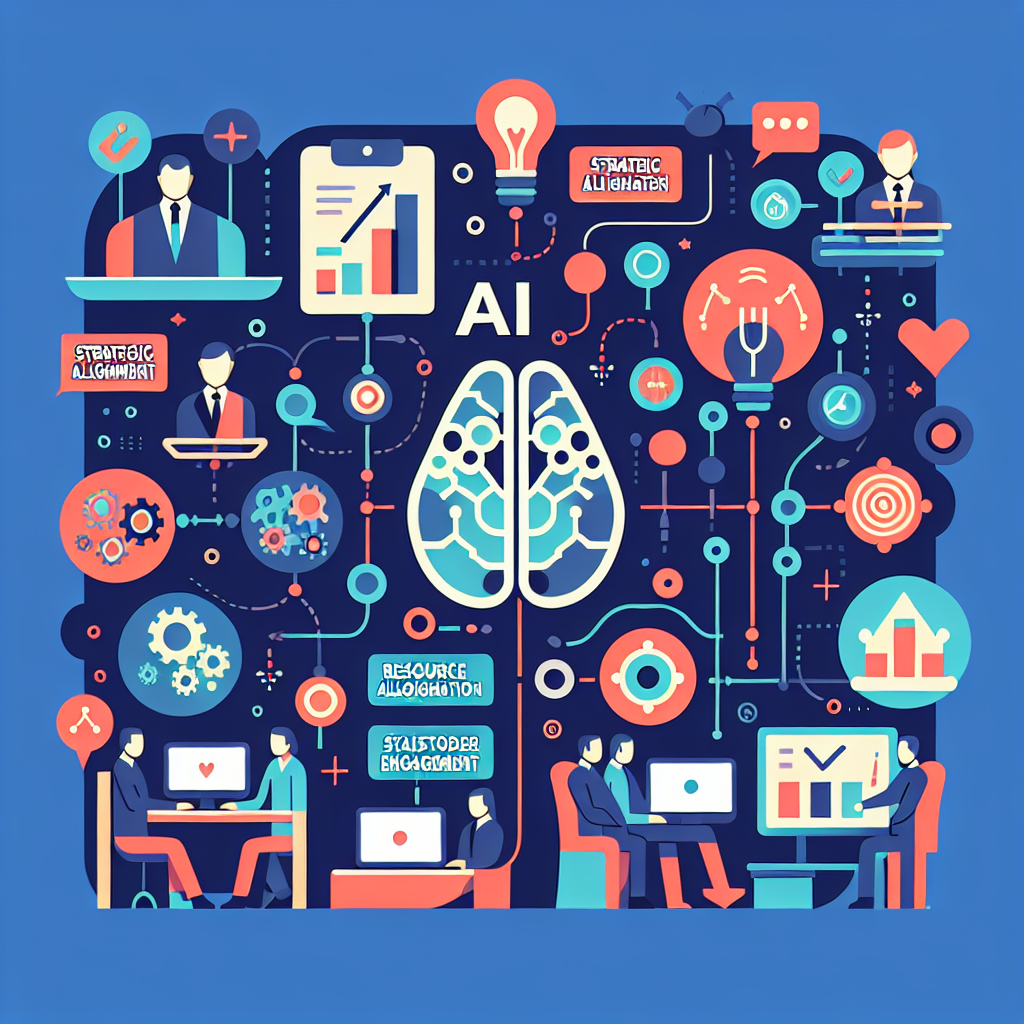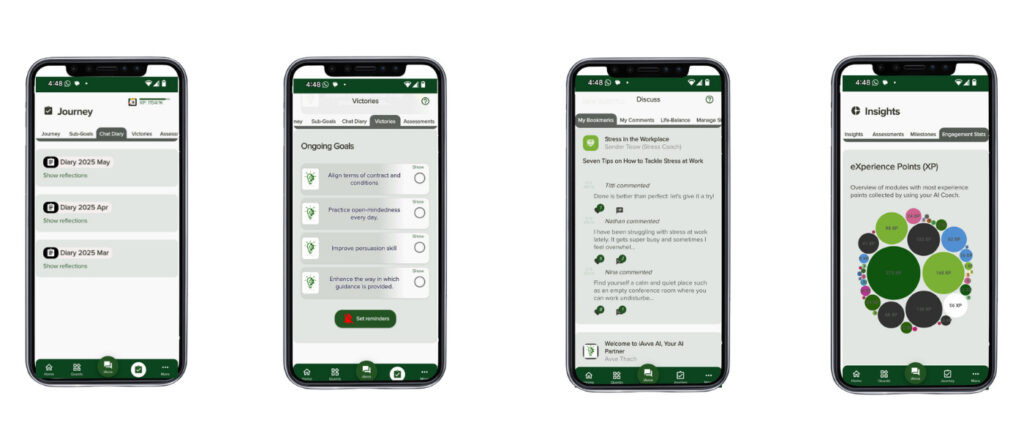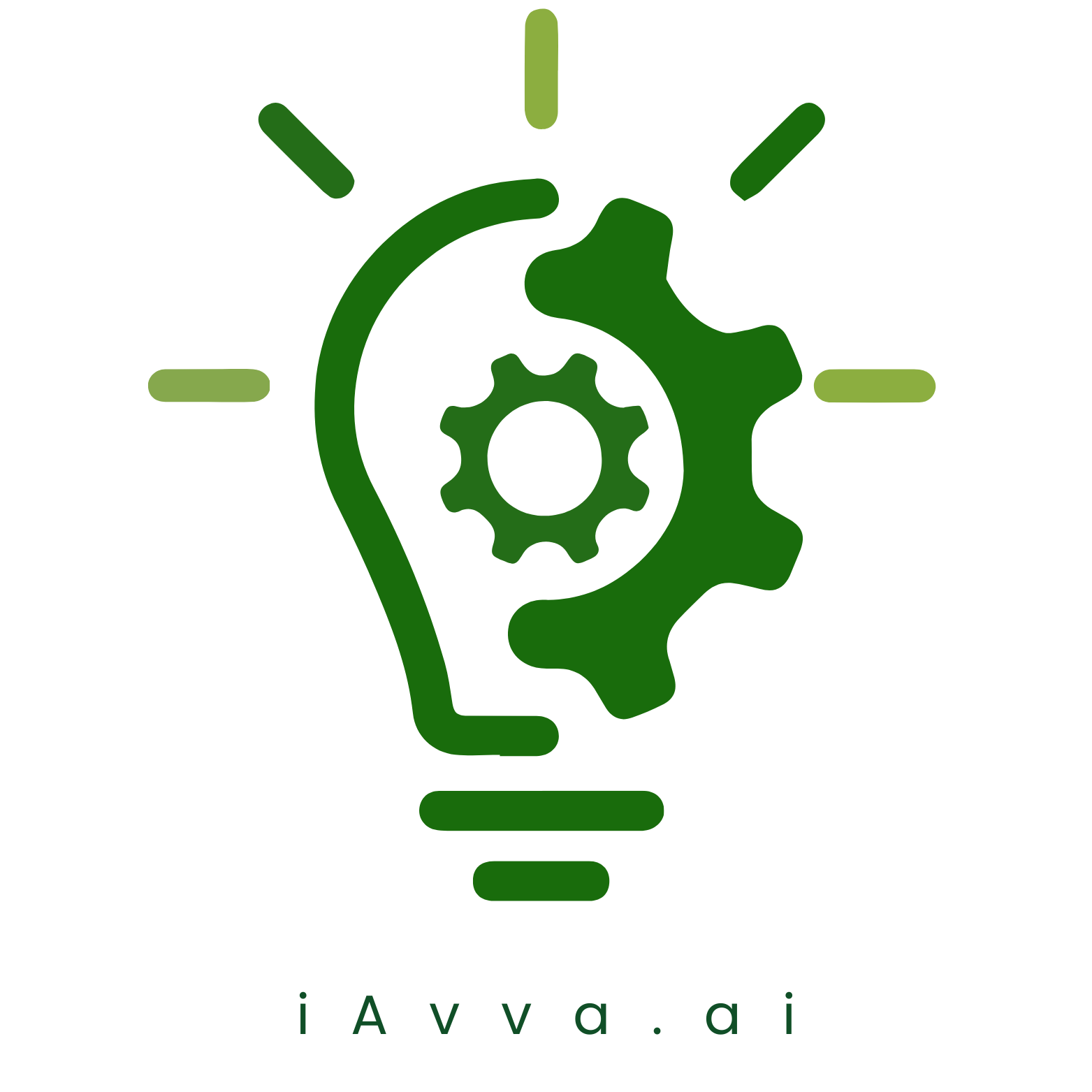Creating a Successful AI Implementation Blueprint
Introduction
Welcome to the wild world of artificial intelligence, where the excitement is palpable and the stakes are high! If you’re here, chances are you’re looking to craft a killer AI implementation plan that not only gets your organization on board with AI but also ensures a smooth ride through the complexities of deployment. Think of it as your roadmap to success minus the traffic jams.
In today’s digital landscape, implementing AI solutions isn’t just a nice-to-have; it’s a necessity for businesses aiming to stay competitive. But hold on! Before you dive into the deep end, let’s chat about how to design an effective artificial intelligence strategy that aligns with your business goals. After all, nobody wants to be that company that jumps on the AI bandwagon only to find themselves lost in the chaos of poorly executed projects.
So, what’s in store? We’ll unpack everything from creating an AI deployment plan to developing a comprehensive AI integration roadmap. Along the way, we’ll highlight key considerations for deploying AI solutions successfully and share best practices for ensuring your project doesn’t just fizzle out post-launch.
Grab your favorite beverage and let’s get rolling on this journey toward mastering your AI implementation plan. Whether you’re a seasoned VP or just dipping your toes into AI project planning, there’s something here for everyone!

Understanding AI Implementation Plans
So, what exactly is an AI implementation plan? Think of it as the treasure map guiding your organization through the intricate landscape of artificial intelligence. It outlines how you’ll take your shiny new AI tools from concept to reality, ensuring they align with your business goals and deliver value.
In a world where 93% of companies are undergoing digital transformation, having a structured approach to implementing AI is crucial. An effective AI deployment plan not only clarifies objectives but also highlights the necessary steps to achieve them, minimizing chaos and maximizing results.
Key Takeaway: A well-designed AI implementation plan is essential for aligning your artificial intelligence strategy with business objectives, ensuring that every step taken leads you closer to your goals.
The Importance of a Structured Approach
A structured approach to implementing AI isn’t just a nice-to-have; it’s a must-have. Without it, you risk wandering aimlessly in the vast desert of data and technology. Here are some key reasons why having an AI implementation plan matters:
- Clarity: It provides a clear direction for all stakeholders involved in the process.
- Resource Management: Helps in allocating resources effectively time, budget, and talent ensuring nothing goes to waste.
- Risk Mitigation: Identifies potential pitfalls early on so you can steer clear of them before they become costly mistakes.
- Performance Measurement: Establishes metrics for success, allowing you to track progress and adjust strategies as needed.
Navigating Common Misconceptions
You might think that simply adopting AI tools will magically solve all your problems. Spoiler alert: it won’t! Many organizations fall into the trap of believing that technology alone can drive transformation. Here’s where a solid AI integration roadmap comes into play it’s not just about tech; it’s about people, processes, and culture.
The best plans consider how each element interacts within the broader organizational ecosystem. For instance, aligning business goals with an artificial intelligence adoption strategy ensures that every initiative supports overall objectives rather than working against them.
The Road Ahead
Your journey into the world of AI doesn’t end with creating an implementation plan; it’s just the beginning! As you embark on this adventure, remember that flexibility is key. The landscape of technology evolves rapidly, and so should your approach to implementing AI solutions. Continuous learning and adaptation are vital components of any successful AI execution strategy.
Your Next Steps: Begin by assessing your current capabilities and identifying gaps in skills or resources needed for successful AI system implementation. This will set the stage for developing a robust roadmap tailored specifically for your organization’s needs!
Key Components of an AI Deployment Plan
Creating a successful AI implementation plan is like assembling a high-tech puzzle. Each piece needs to fit perfectly to see the bigger picture. Let’s dive into the key components that will make your AI deployment plan not just functional, but phenomenal!
- AI Strategy Alignment with Business Goals: Your AI initiatives should be like a well-matched pair of socks aligned and ready to go! Ensure your artificial intelligence strategy aligns with your overall business objectives. This means defining clear goals that AI can help achieve, whether it’s improving customer service or streamlining operations.
- Resource Allocation and Budgeting: Money makes the world go ’round, and your AI projects are no exception. Outline your budget clearly: what resources do you need for data collection, technology acquisition, and talent? A well-planned budget is crucial for avoiding those dreaded surprises down the road.
- Stakeholder Engagement and Communication: Think of stakeholders as the cheerleaders of your AI journey. Keep them informed and involved in every step. Regular updates, feedback sessions, and clear communication channels will ensure everyone is on board with the vision and who doesn’t love a good pep talk?
Key Takeaway: A successful AI deployment isn’t just about technology; it’s about people, processes, and planning. Aligning your AI strategy with business goals while keeping stakeholders engaged is essential for effective implementation.
Your AI integration roadmap should reflect these components to guide you through the maze of implementing AI solutions effectively. Remember, this isn’t just about deploying technology it’s about transforming how your organization operates!

Developing an AI Integration Roadmap
Creating a successful AI implementation plan is like planning a road trip. You wouldn’t just hop in the car and hope for the best, right? You need a map, some snacks, and a playlist that keeps you motivated along the way. Similarly, an effective AI integration roadmap guides your organization through the twists and turns of implementing artificial intelligence.
The first step in crafting this roadmap is to identify your destination what do you want to achieve with your AI initiatives? Whether it’s streamlining operations or enhancing customer experiences, having clear objectives is crucial. Once you’ve got that down, it’s time to chart your course:
- Assess Current Capabilities: Evaluate existing systems and processes. Are they ready for AI? This step is akin to checking your vehicle’s condition before hitting the road.
- Define Use Cases: Identify specific areas where AI can add value. This could be anything from automating repetitive tasks to predictive analytics that forecast trends.
- Create a Timeline: Develop a realistic timeline with milestones for each phase of implementation. Think of it as scheduling rest stops on your journey essential for maintaining momentum.
- Allocate Resources: Ensure you have the right tools and talent in place. This includes budgeting for technology and training staff to use new systems effectively.
- Engage Stakeholders: Keep everyone informed and involved. Regular communication helps avoid detours caused by misunderstandings or resistance.
Your timeline should include key milestones that mark significant achievements along the way. For instance:
| Milestone | Date | Description |
|---|---|---|
| Project Kickoff | Month 1 | Initial meeting with stakeholders to outline goals and expectations. |
| Data Collection Completion | Month 3 | Gather necessary data for training AI models. |
| Pilot Testing Phase | Month 5 | Select use cases for initial testing of AI solutions. |
| Full Implementation | Month 8 | User feedback integrated; full rollout of AI solutions across departments. |
A well-structured roadmap not only sets clear expectations but also allows for adjustments as needed. Remember, flexibility is key just like rerouting when you hit unexpected traffic!
If you’re ready to take the plunge into AI but unsure where to start, let’s chat! A tailored approach can make all the difference in your journey towards successful AI deployment strategies.
Ai Project Planning Essentials
When it comes to crafting a successful AI implementation plan, project planning is the backbone of your strategy. Think of it like preparing for a road trip: you wouldn’t just hop in the car without knowing your destination, right? So, let’s break down the essentials of AI project planning that will help you navigate the twists and turns of AI deployment with ease.
Identifying Use Cases for AI Solutions
The first step in your AI project planning is to identify specific use cases where AI can add value. This isn’t just a guessing game; it’s about aligning your AI solutions with tangible business needs. Here are some strategies to pinpoint those golden opportunities:
- Assess Current Processes: Look at existing workflows and identify bottlenecks. For instance, if your customer service team spends hours answering repetitive queries, deploying an AI chatbot could streamline that process.
- Engage Stakeholders: Talk to team members across departments to gather insights on pain points. Their firsthand experiences can reveal areas where AI can make a significant impact.
- Market Research: Investigate industry trends and competitor strategies. If others are leveraging AI for predictive analytics in sales, it might be worth exploring for your own team.
Risk Assessment and Management Strategies
No great adventure comes without risks! Identifying potential risks early on is crucial for a successful AI implementation plan. Here’s how to tackle this daunting task:
- Data Privacy Concerns: With great data comes great responsibility! Ensure compliance with regulations like GDPR by conducting thorough data audits before implementing any AI solutions.
- Technology Compatibility: Assess whether existing systems can integrate seamlessly with new AI technologies. You don’t want to discover mid-deployment that your systems are incompatible!
- User Adoption Challenges: Anticipate resistance from employees who may fear job displacement or struggle with new tools. A robust change management strategy that includes training sessions can ease these concerns.
Key Takeaway: A well-planned project not only identifies use cases but also anticipates risks, ensuring smoother implementation and higher chances of success in your AI journey.

Implementing AI Solutions: Best Practices
So, you’re ready to dive into the world of AI and start implementing solutions that can transform your business? Awesome! But before you do, let’s talk about some best practices that will make your AI implementation plan as smooth as a freshly buttered croissant.
- Iterative Development and Feedback Loops: Think of this like a cooking show where the chef tastes their dish at every step. By continuously testing and refining your AI models, you’ll ensure they are not only effective but also aligned with real-world needs. This approach allows for quick adjustments based on user feedback, leading to a more successful deployment.
- User Training and Support Mechanisms: If you think your team will just magically know how to use AI tools, think again! Providing comprehensive training is crucial. Implement an ongoing support system that includes tutorials, Q&A sessions, and user forums. This way, everyone feels empowered to leverage AI solutions effectively.
- Aligning Business Goals with AI Implementation: Your shiny new AI technology needs to be in sync with your organizational objectives. Before rolling out any solution, ask yourself: How does this align with our strategic goals? If it doesn’t fit like a glove, it might be time for a rethink.
- Choosing the Right Metrics: You can’t improve what you don’t measure! Define clear KPIs for tracking the success of your AI initiatives. These could include user adoption rates, process efficiency improvements, or even revenue increases directly linked to the new technology.
- Cultural Readiness: Implementing AI isn’t just about the tech; it’s also about people. Foster a culture that embraces change and innovation. Encourage open discussions about how AI can enhance daily tasks rather than replace jobs. The more buy-in you get from employees at all levels, the smoother your implementation will go.
- Pilot Programs: Before going all in, consider running pilot programs with smaller teams or specific departments. This allows you to gather insights and make necessary adjustments without causing widespread disruption across the organization.
Takeaway: A well-structured approach to implementing AI solutions is crucial for success. By following these best practices, you’re not just deploying technology; you’re setting up an ecosystem where artificial intelligence can thrive alongside your team!
Ai Adoption Framework: Ensuring Success Across the Organization
Implementing an AI implementation plan is not just about technology; it’s also about culture. Think of it like teaching a cat to swim it’s not just about throwing them in the water and hoping for the best. You need to create an environment where AI can thrive, and that starts with understanding how your organization will adapt.
Cultural Considerations for AI Adoption
The first step in your AI adoption framework is to address cultural considerations. Here are some key points:
- Embrace a Growth Mindset: Encourage your team to view AI as a partner rather than a threat. This means fostering an environment where curiosity and experimentation are celebrated.
- Promote Collaboration: Break down silos between departments. Implementing AI solutions is a team sport, and cross-functional collaboration can lead to innovative ideas that drive success.
- Encourage Open Communication: Create channels for feedback and discussion around AI initiatives. Transparency helps alleviate fears and builds trust among employees.
The Role of Leadership in Driving Change
Your leadership team plays a pivotal role in this transformation. Here’s how they can pave the way:
- Set Clear Objectives: Leaders should articulate a clear vision for AI integration that aligns with business goals, making it easier for teams to understand their role in the journey.
- Sponsor Training Programs: Invest in training sessions that empower employees with the skills needed to leverage AI tools effectively. Remember, knowledge is power!
- Lead by Example: When leaders actively engage with AI technologies and share their experiences, it sets a tone of acceptance and enthusiasm throughout the organization.
Key Takeaway: A successful AI implementation plan hinges on cultural readiness and strong leadership support. Without these elements, even the most sophisticated technology can fall flat.

This framework isn’t just theoretical; organizations like Google have thrived by embedding AI into their culture from the ground up. By prioritizing cultural readiness alongside technological advancements, your organization can unlock transformative potential through its AI initiatives.
Measuring Success: Key Performance Indicators for AI Implementation
When it comes to an AI implementation plan, measuring success is like trying to find a needle in a haystack except the needle is your ROI, and the haystack is filled with data. To ensure your AI deployment plan hits the mark, you need to define and track the right Key Performance Indicators (KPIs). Here’s how to do just that.
Defining Relevant KPIs for Tracking Progress
Your first step in measuring success is to identify KPIs that align with your business objectives. These should be specific, measurable, attainable, relevant, and time-bound (SMART). Here are some examples:
- Return on Investment (ROI): Calculate how much revenue your AI solutions generate compared to their costs.
- User Adoption Rate: Measure how quickly employees are integrating AI tools into their daily workflows.
- Error Reduction: Track decreases in errors or inefficiencies as a direct result of AI implementation.
- Time Savings: Quantify how much time is saved on tasks previously performed manually.
- Customer Satisfaction Scores: Monitor changes in customer feedback post-AI integration.
Tuning Strategies Based on Performance Data Analysis
Once you have defined your KPIs, it’s time to roll up your sleeves and analyze the data. This phase is crucial because it allows you to fine-tune your strategies based on real-world performance. Here are some tips:
- Regular Reviews: Schedule monthly or quarterly reviews of performance data to assess what’s working and what isn’t.
- A/B Testing: Experiment with different approaches within your AI systems to see which yields better results.
- User Feedback: Actively solicit feedback from users about their experiences with AI tools; this can provide insight into areas needing improvement.
- Pivots When Necessary: Don’t be afraid to pivot your strategy based on KPI outcomes; flexibility can lead to better results!
Pro Tip: Always align your KPIs with broader business goals. This ensures that every metric you track contributes directly to the success of your overall artificial intelligence strategy!
The bottom line? Measuring success in an AI implementation plan isn’t just about tracking numbers; it’s about creating a culture of continuous improvement. By defining relevant KPIs and tuning strategies based on performance data analysis, you’re not just implementing AI solutions you’re paving the way for an agile organization ready to adapt and thrive in a tech-driven world.
Ai Transformation Plan: Scaling Up Your Initiatives Over Time
- Evolving your AI strategy with industry trends
- The importance of ongoing education and training
Sustaining Growth Through Continuous Improvement
This section will summarize the key points discussed throughout the post, emphasizing the importance of a well-structured approach to implementing AI successfully.
{ “@context”: “https://schema.org”, “@graph”: [ { “@type”: “BlogPosting”, “mainEntityOfPage”: { “@type”: “WebPage”, “@id”: “https://iavva.ai/ai-implementation-plan-blueprint-success” }, “headline”: “AI Implementation Plan: Blueprint for Success”, “description”: “Discover how to create an effective AI implementation plan. Learn strategies and steps for successful AI integration in your business.”, “image”: [ “https://ranklytics.s3.amazonaws.com/3527/1758830555_3527_95696566.png”, “https://ranklytics.s3.amazonaws.com/3527/1758830570_3527_24991415.png”, “https://ranklytics.s3.amazonaws.com/3527/1758830583_3527_3309937.png”, “https://ranklytics.s3.amazonaws.com/3527/1758830604_3527_9811048.png” ], “author”: { “@type”: “Person”, “name”: “Stefano Mazzariol” }, “publisher”: { “@type”: “Organization”, “name”: “Avva Thach AI Consulting, Leadership Coaching, Corporate Training”, “logo”: { “@type”: “ImageObject”, “url”: “” } }, “url”: “https://iavva.ai/ai-implementation-plan-blueprint-success”, “datePublished”: “”, “dateModified”: “”, “@id”: “#blogPost” }, { “@type”: [“FAQPage”], “@id”:”#faqPage1″, “mainEntity”:[ { “@type”:”Question”, “name”:”What is an AI implementation plan?”, “acceptedAnswer”:{ “@type”:”Answer”, “text”:”An AI implementation plan is a strategic roadmap that guides an organization through the process of integrating artificial intelligence solutions. It ensures alignment with business goals and maximizes the value delivered by AI technologies.” } }, { “@type”:”Question”, “name”:”Why is a structured approach important for AI implementation?”, “acceptedAnswer”:{ “@type”:”Answer”, “text”:”A structured approach is crucial because it provides clarity, aids in resource management, mitigates risks, and establishes performance metrics. It ensures that the implementation process aligns with organizational goals and delivers desired outcomes.” } } ] }, { “@type”:”SpeakableSpecification”, “@id”:”#speakable1″, “@context”:”https://schema.org/”, “@graph”:[ { “@type”:”SpeakableSpecification” } ], “__speakable”:[ { “__speakableAttribute”:[ “#blogPost” ] } ] } ] }





















Leave a Reply